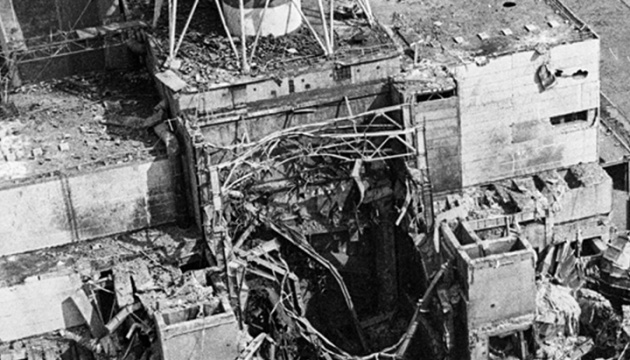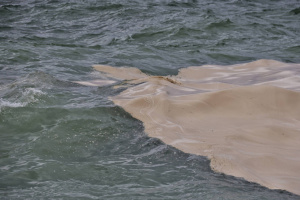
Today marks anniversary of Chornobyl disaster
On April 26, 1986, at 01:23, a powerful chemical explosion ripped through power unit 4 of the Chornobyl nuclear power plant, obliterating part of the reactor unit and the engine room.
As a result of the blast, a fire broke out, spreading to the roof of power unit 3. Firefighters were tackling the blaze until 5:00. However, the fire was fully put out inside unit 4 only on May 10, after most of the graphite had burned out.
As a result of the disaster, a radioactive cloud was formed, covering the territories of modern-day Ukraine, Belarus, and Russia, as well as the areas across many European countries, including Sweden, Austria, Norway, Germany, Finland, Greece, Romania, Slovenia, Lithuania, and Latvia. According to the International Nuclear Events Scale (INES), the accident was classified at level 7, which is the highest.
From the very start, Moscow and the leadership of the Ukrainian SSR had been concealing from the population the fac that a major accident occurred, and no warnings were issued about the consequences of the disaster. Sweden was the first to report a radiation level increase. Only on April 28 did the first official notification emerge in the USSR.
In the first days following the accident, the population of a 10-kilometer zone was evacuated before the evacuation zone was expanded to a 30 km perimeter. Radioactive contamination affected 2,293 settlements in Ukraine that were home to over 2.6 million people. As a result of the disaster, more than 5 million hectares of land were withdrawn from agricultural circulation.
In order to prevent further radiation spread, at the end of 1986, the affected reactor was covered with a special sarcophagus. According to expert estimates, about 95% of nuclear fuel that was in the reactor at the time of the accident remained beneath it, as did a significant amount of radioactive substances in what was left of the destroyed building. For safety reasons, on December 15, 2000, operations at the Chornobyl NPP were put to a halt. At the same time, the Shelter facility, erected in 1986, gradually fell into disrepair.
Ukraine appealed to the international community to hold a competition of projects for the transformation of the Shelter facility. In 2004, a tender was held for the design and construction of a new sarcophagus, the New Safe Confinement. Its construction began in 2012. On November 29, 2016, the Arch of the New Safe Confinement was erected over the Shelter facility. On July 10, 2019, State Specialized Enterprise Chornobyl NPP put the NSC complex into operation.
In early 2022, the Chornobyl NPP came under Russian occupation. The invaders seized the territory of the Chornobyl nuclear power plant, located near the border with Belarus, on day 1 of the full-scale incursion, February 24. They captured the Ukrainian military deployed in the area and held the plant’s civilian staff hostage.
The invaders remained in the Chornobyl zone for five weeks. As a result of their actions, the NPP was several times left without power supply, necessary for cooling spent fuel. At that moment, the world was once again on the verge of another major disaster.
After the liberation of the Chornobyl nuclear power plant, numerous cases of destruction and disassembly of equipment were recorded. Not a single facility remained undamaged, furniture was broken, computers and office equipment were either looted or smashed.
In addition, the occupiers disabled the Automated Radiation Control System, which includes 39 sensors measuring gamma radiation.
According to the State Agency for the Management of the Exclusion Zone, the losses suffered by the zone and the enterprises located there stand at over EUR 100 million.
Meanwhile, the Zaporizhzhia NPP remains under Russian occupation, which the invaders use as a military base. They have mined the NPP perimeter and continue to keep heavy equipment and ammunition in turbine halls and weapons – on the roofs of power units. The NPP has survived eight blackouts. Destructive processes and degradation of equipment are being observed at the plant as no repairs are done amid constant interruptions in power supply, an increased level of fire threat, and systematic violations of nuclear and radiation safety requirements.




